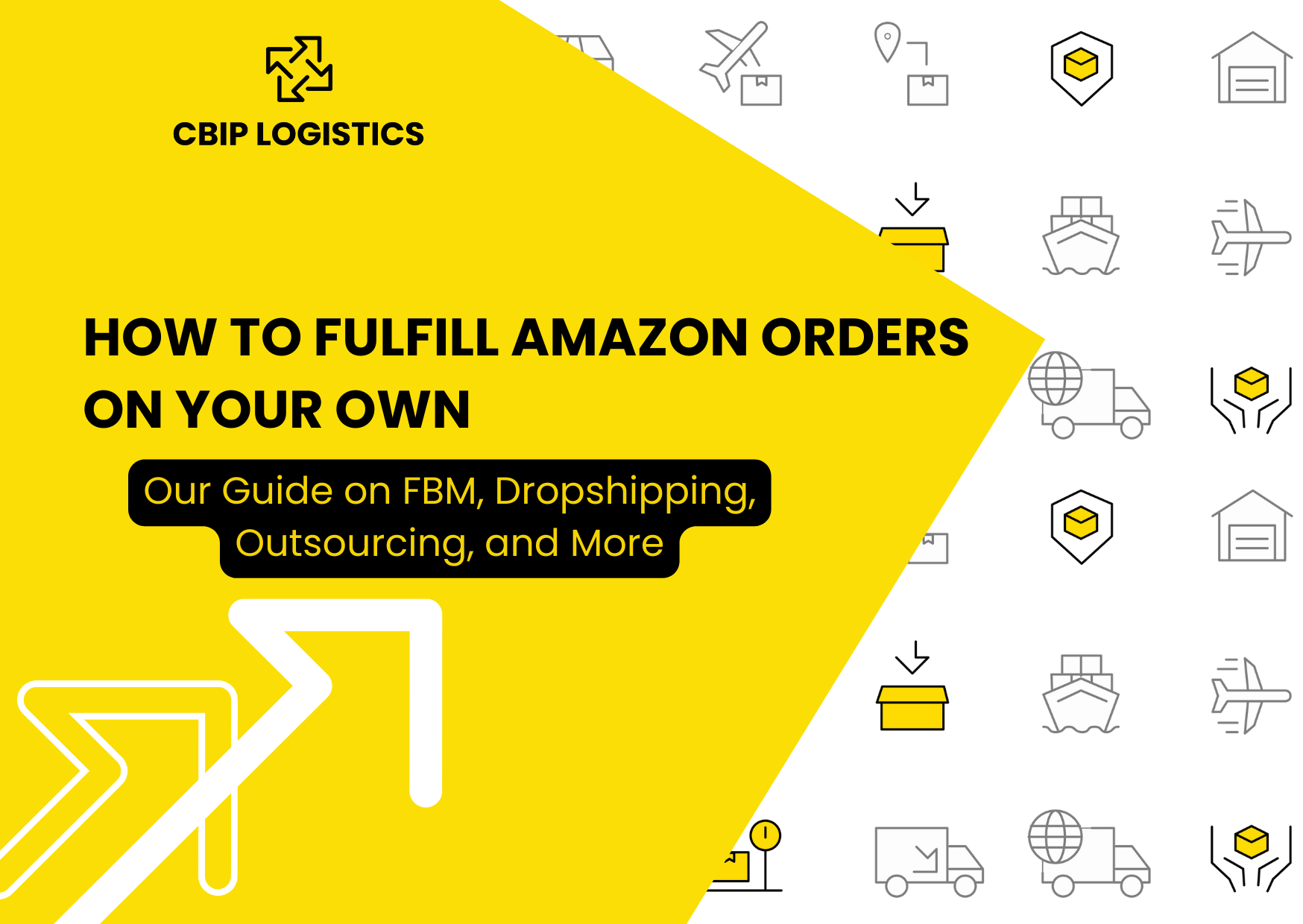FBM, Dropshipping, and Outsourcing: E-Commerce Guide to Fulfilling Amazon Orders on Your Own

Table Of Contents
- What is the alternative to FBA?
- Getting non-FBA Fulfillment Right: The Complete Guide
- ☝Going it alone: What you need from an in-house fulfillment team
- 📦Handing it off: Why dropshipping is a great low-stakes option
- 🤝Partnering up: Your options for hiring a non-Amazon third-party provider
- Need some help putting together a plan? That’s what we at CBIP Logistics do best
In recent years, Amazon has exploded in popularity for new e-commerce merchants. With a global presence and an easy, plug-and-play process, selling and moving merchandise with Amazon is difficult to resist.
However, just because you sell on Amazon doesn’t mean you need to fulfill orders through it too.
Amazon’s fulfillment centers are renowned worldwide for being some of the most efficient logistics machines in e-commerce. However, even those who love using Amazon’s in-house fulfillment service, FBA (Fulfillment By Amazon), will admit that it’s not without its faults.
Some of the downsides to choosing FBA include:
1. Lack of Control over Inventory and Last-Mile
When you choose Amazon FBA, you give up control over your inventory and product delivery. Should anything go wrong, both you and your customer’s point of contact is Amazon, not you.
2. Inflexible Prices and Shipping Times
Besides limited control, you also are completely at the mercy of Amazon’s shipping times and rates. They have millions of customers like you, and therefore cannot offer retailers much flexibility.
What is the alternative to FBA?
For those who are planning to sell on Amazon, you might already be familiar with one alternative to FBA: FBM, or Fulfillment By Merchant. It sounds simple enough, but how can you pull off managing your own fulfillment for Amazon sales?
Whether you are new to selling on Amazon and want to retain control over fulfillment, or you have tried FBA and found that it just doesn’t work for your company, do not worry. We can tell you how to successfully sell on Amazon while retaining control over your fulfillment process.
Read About CBIP’s Global E-commerce Logistics Services
Getting non-FBA Fulfillment Right: The Complete Guide
The final shipping stage is difficult to get right. Unfortunately, getting it right is crucial to the success of your e-commerce business. Studies show that as many as 38 percent of shoppers would not return to an e-commerce site after a negative shipping experience.
Amazon shipping standards are even higher, meaning that if you are selling on Amazon but fulfilling Amazon orders yourself, you’d better have a great strategy for delivery.
How do you form a fulfillment strategy for fulfilling your Amazon sales? First, you’ll need to decide whether you’ll be fulfilling in-house, dropshipping, or outsourcing to a third party.
Let’s run through how each one of those methods looks, and how to get each one right.
☝Going it alone: What you need from an in-house fulfillment team
In-house fulfillment AKA Fulfillment By Merchant (FFM) simply means that you are executing each stage of fulfillment on your own. This type of fulfillment is most often done by new e-commerce businesses with very low order volume, or large corporate operations who have the resources to form an efficient fulfillment team.
Doing fulfillment yourself gives you the highest level of control over your fulfillment and packaging. However, you will need to invest a significant amount of time, resources, and manpower into compiling and managing your fulfillment operation.
To do everything yourself, you will need to establish a way to:
- Receive inventory to have enough on hand to fulfill orders
- Organize and store your inventory in a convenient location
- Process your orders once they are received from the customer — including retrieving and packaging items.
- Ship packages, either by running them personally to the post office, or arranging for a mail courier carrier to pick them up from your fulfillment location
The above are just the processes that you will have to carry out daily. You will also need things like dedicated software systems and managers to optimize your whole fulfillment operation.
📦Handing it off: Why dropshipping is a great low-stakes option
Fulfillment with drop-shipping can be a great, low-cost solution for some retailers — particularly if you have other fulfillment avenues and are hoping to test out shipping in a new area.
In this model, you as the merchant never hold the product you sell. When a customer places an order on your site, you then forward the order to the drop shipper. They receive the order and fulfill the order directly to your customer.
As dropshipping allows you to sell a product without needing to manage and store inventory, this method has become popular for cutting many of the costs traditionally linked to fulfillment. However, you’ll still lack control over fulfillment and may compromise other things like product quality control, customization, and brand development.
🤝Partnering up: Your options for hiring a non-Amazon third-party provider
If you’re trying to scale fast, setting up in-house operations is not worth the headache; we’d recommend you hire out.
If you’d rather avoid investing all that capital to fulfill orders in-house, you might want to consider outsourcing a logistics provider, such as a 3PL or 4PL.
3PL fulfillment providers
Besides not having to spend money to create your own fulfillment process, you can generally get lower shipping rates for your parcels when you ship in bulk.
It is important to note here that the 3PL provider will only be responsible for transportation and logistics. As the seller, you still need to maintain oversight. This requires a high level of understanding of your overall logistics strategy.
For those looking for more guidance, you may want to look into a newer option — the fourth-party logistics provider.
What’s the deal with the 4th-party logistics provider?
If you have been shopping around for a fulfillment provider, you may have come across the term 4PL. A 4PL service accomplishes all the same steps as a 3PL and acts as a strategic partner to your business. But unlike when you work with Amazon, you have a say in how your goods are shipped and at what cost.
Unlike 3PLs (or Amazon), 4PLs don’t own the trucking companies, warehouses, and other services that they use. This means they have the flexibility to design logistics around what you need and not their own assets.
Rather, they leverage their expertise to find which carriers, warehouses, and trucking services work best for you.
RELATED: FBA vs FBM: Which Fulfillment Option Is Right For You?
Need some help putting together a plan? That’s what we at CBIP Logistics do best
When deciding on a fulfillment plan you need to get a real defined idea of your business goals and roadmap. Amazon fulfillment is great for those just starting out who want to see if their product has legs.
However, once you have an established product and business plan, you have a world of options out there that may work better for your budget, scaling goals, and brand management.
At CBIP, we create logistics plans tailored precisely to your business needs and location. We then work in tandem with you to optimize your fulfillment process, keeping it operating at a scale and price that works for you. Working with CBIP, you benefit from our arsenal of tools, partner network, and industry experience.
Set up a meeting with one of our consultants to see how a personalized logistics plan can help your e-commerce business flourish.






